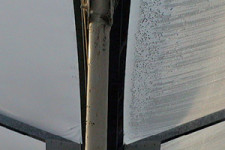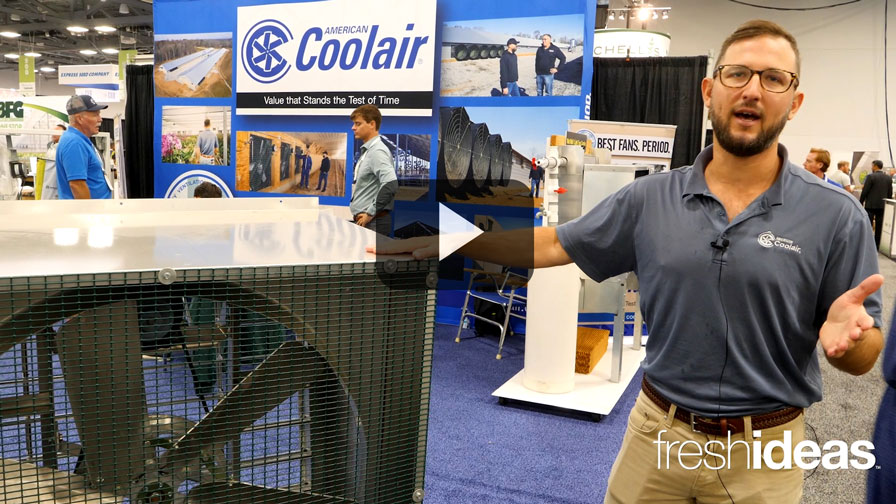Greenhouse Films: Stretching It

“What growers are trying to do is stretch it,” says Nick Calabro, Northeast regional sales manager for Klerks Hyplast, Inc. “Growers are going an additional year, getting five or six years with the film before replacing it.”
At What Cost?
It’s important to remember a few things if you decide to go this cost-effective route.
One, dirt build up can be detrimental. Each year the film is on the structure, it can lose up to 2 percent of its light transmission. For those growers utilizing a top layer and an interior layer to improve heat retention, Calabro says four surfaces are now susceptible to dirt. This build up can be a result of a number of things: pesticides, exhaust, outside air particles, fogging applications and other factors. “After four years, you could be looking at an 8 percent loss in light transmission.” With anything over a 5 percent loss, changes in crop response are visible.
“For bedding crops, I’ve had people say to me, ‘I changed the film out and the following fall, the next crop I grew was a great crop,'” recounts Calabro. “They noticed that it finished quicker and more evenly.”
Holes and tears can also wreak havoc with a film’s effectiveness. Calabro insists on patching every hole and tear with clear, greenhouse tape and patches, especially with double layer installations that depend on constant inflation. “Never scrimp on tape,” he says.
“When it’s not inflated, the film will beat on frame members, which can cause the film to rip.” Calabro notes that repair tape can last about 18 months, with its adhesiveness tending to give way first.
In most cases, stretching greenhouse film into an extra year is done by necessity. “Film is like a balloon,” he says. “The more you stretch it, the thinner it gets, making it easier to puncture.”
New film is very elastic. “When pulled, every inch of film ought to get 500 percent elongation,” Calabro says. After four years, that stretch will only go about 50 percent.
Also, film durability can depend on region. For example, Florida generally sees higher temperatures and more sun compared to northern states. This exposure can lead to quicker degradation. With cooler, cloudier days in the north, some growers can get seven to eight years out of their greenhouse film.
What Are My Options?
Going from a single layer to a double layer of greenhouse film can provide a heat savings of almost 50 percent. To save an additional 15 to 20 percent in nighttime heating expenses, Calabro recommends changing one of your layers into an infrared film. He says infrared films work similarly to the way clouds in the winter trap radiant heat and then radiate it back down to the earth.
Traditional four-year films have only 20 percent light diffusion, while infrared films have more than 50 percent of its light transmission as diffused light. Light diffusion reduces structural shading and produces higher quality light.
This layer is typically placed on the inside, close to the crop, says Calabro, because most infrared films on the market are also drip control films. With poor ventilation and humidity, water can coalesce and form droplets. These droplets can fall onto the crop and soak into the soil. The drip control additive incorporated in this film can prevent condensation, saturated soils and foliar disease.
“Instead of having water form into droplets,” Calabro says, “the drip control film is going to sheet the water into thin layers that will flow down to the gutter or to the ground.” Also, water droplets can act as a prism, and when hit by light, up to 10 percent of the light transmission can be reflected back out of the greenhouse.
Thermic film is another plastic that can help reduce the heat trapped in a greenhouse during the daylight hours. This is done by blocking ultraviolet light and a portion of the sun’s infrared heat.
“Normally photosynthesis shuts down when internal leaf temperatures reach 85 degrees,” Calabro says. So a cooler environment not only benefit the employees, but also increase plant production up to 15 percent. He wouldn’t recommend thermic films for growing bedding crops in the northeast. “They’re normally used with high light in the summer.”









